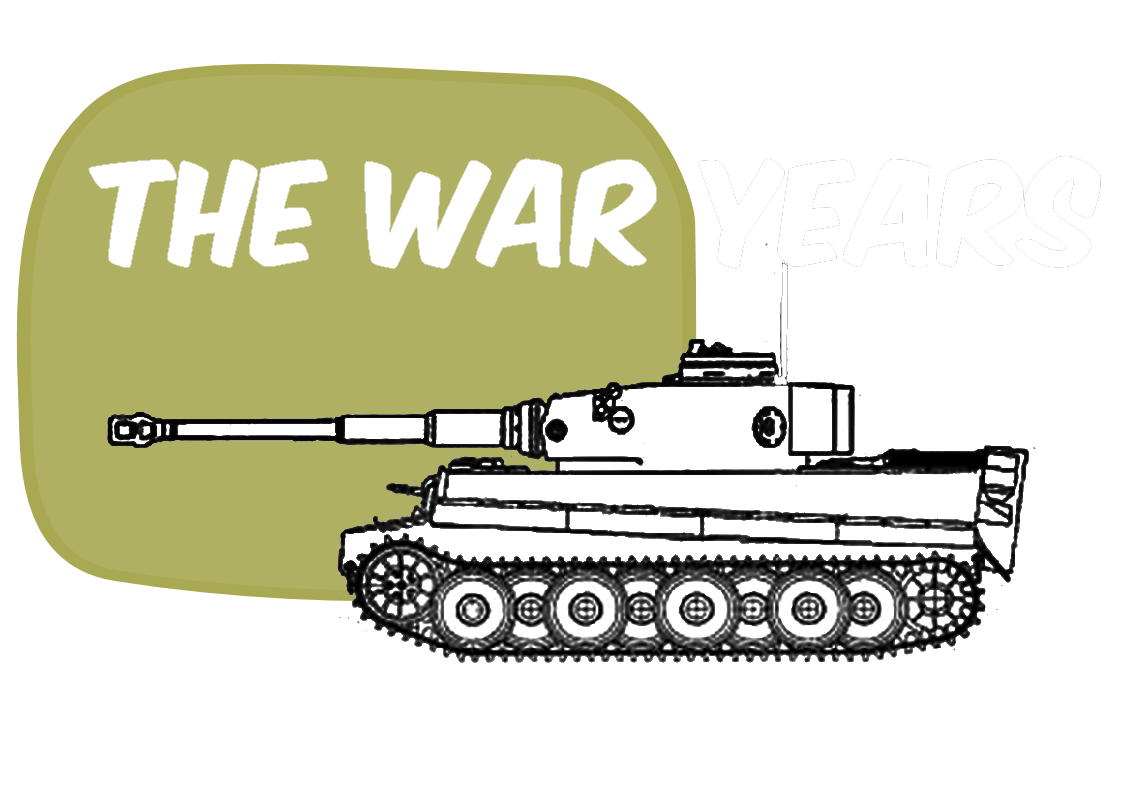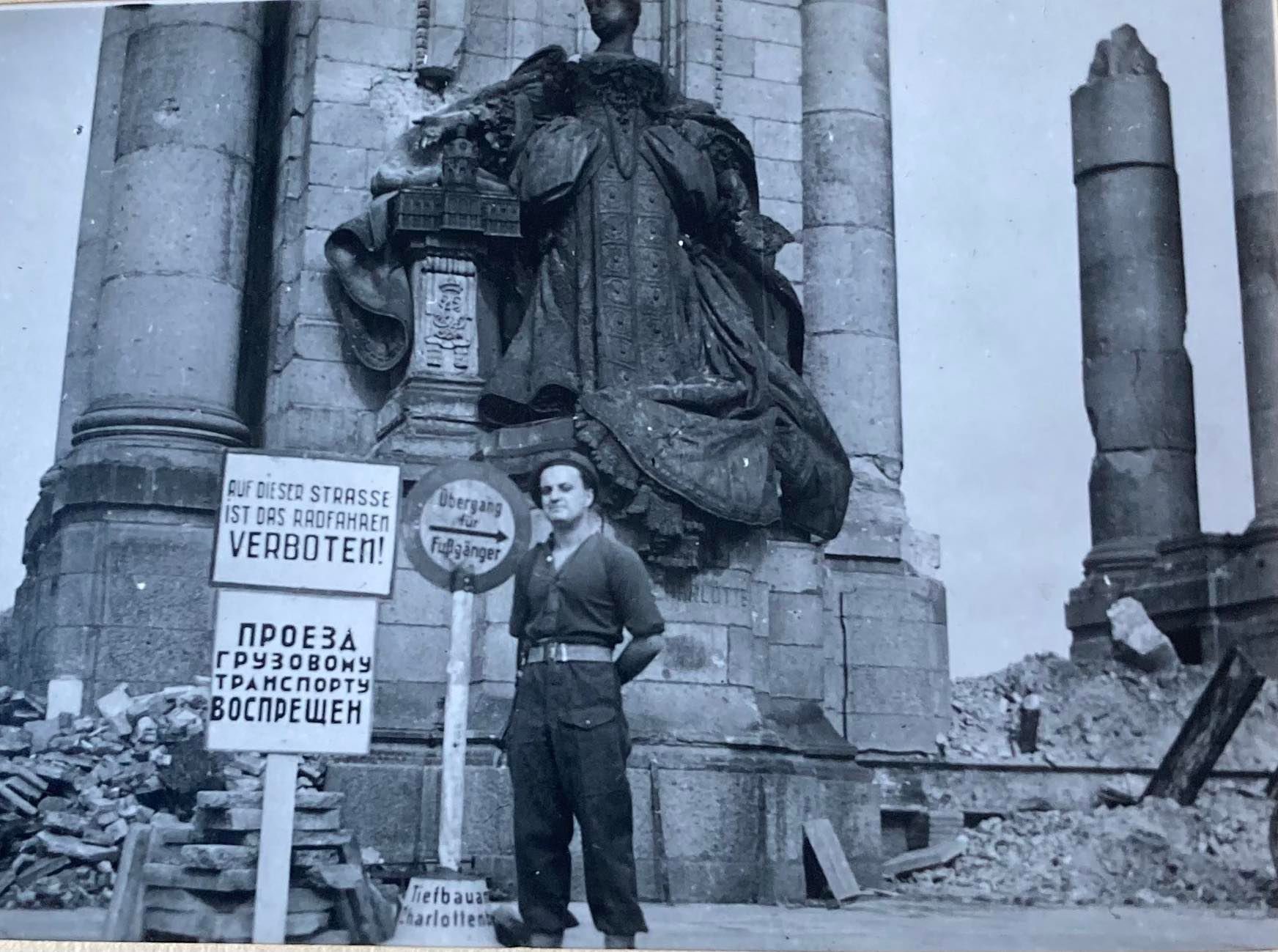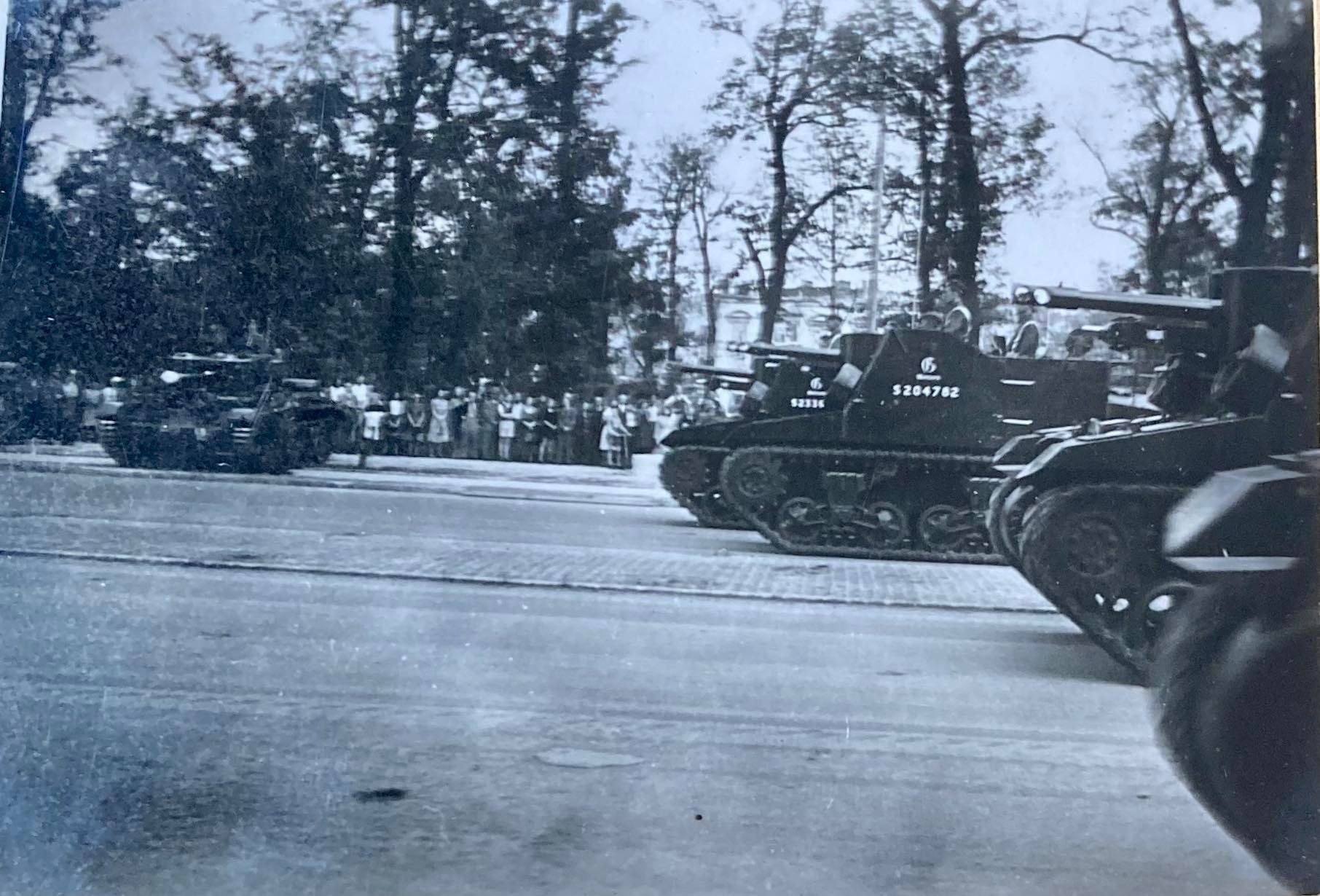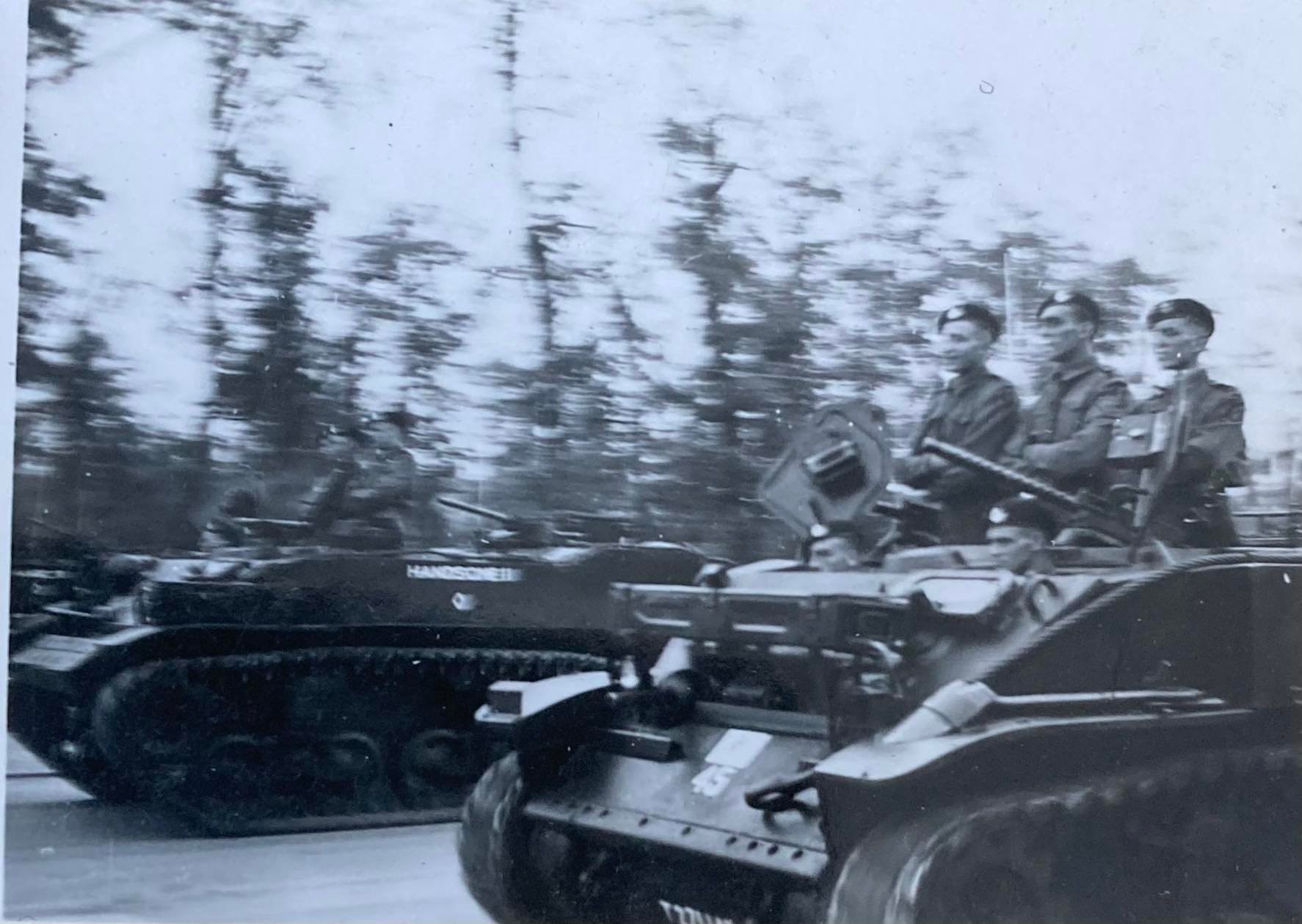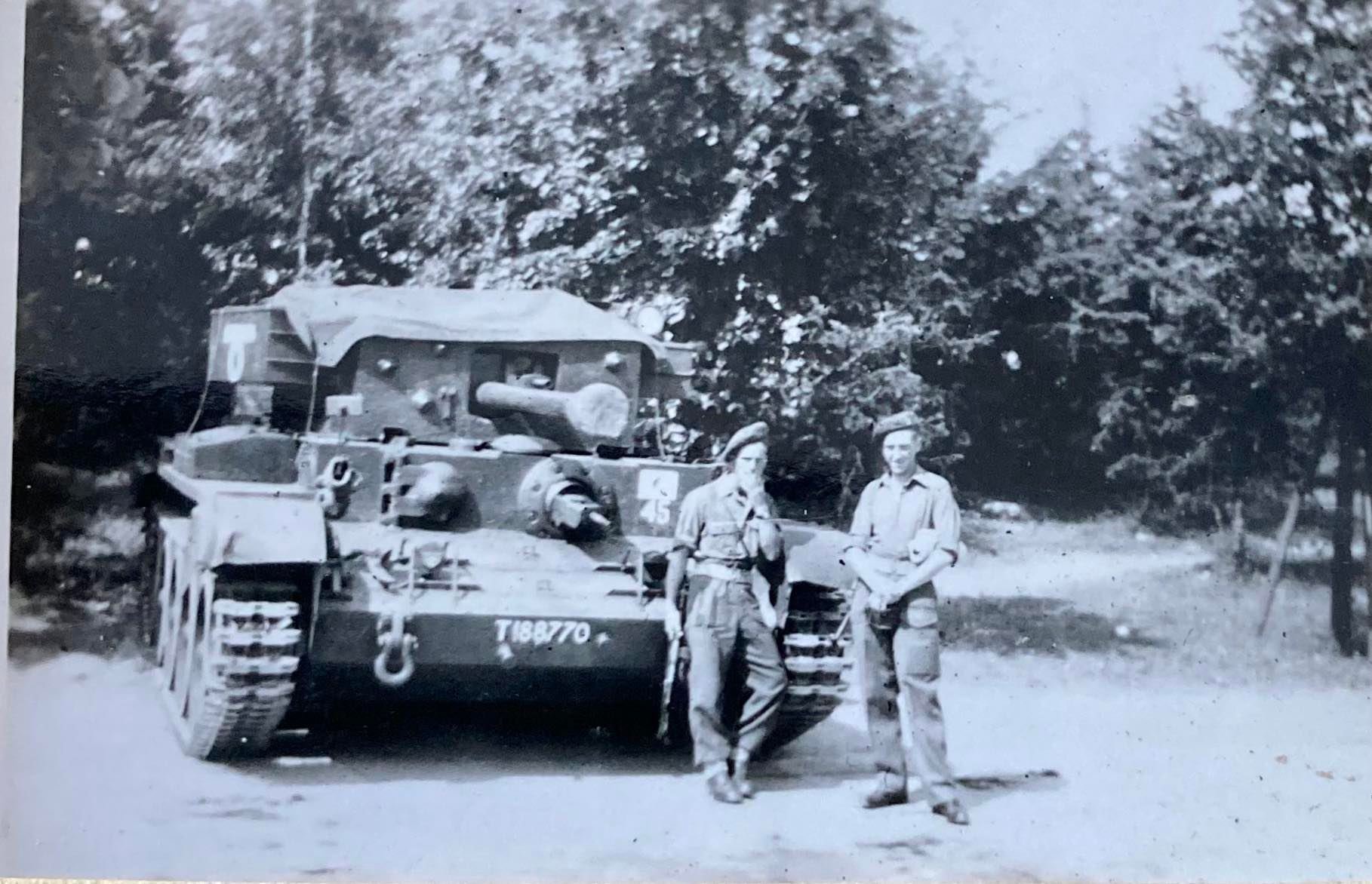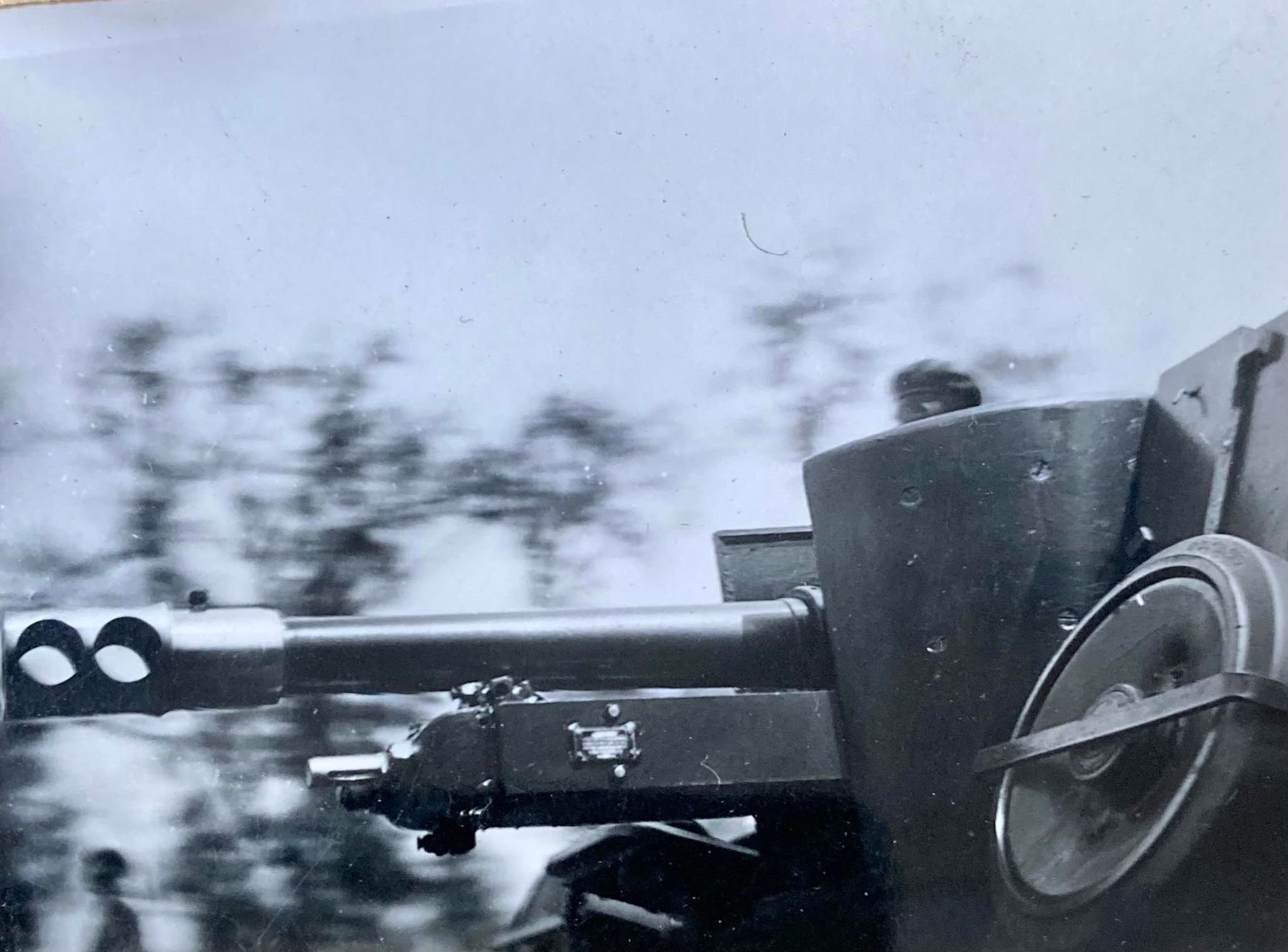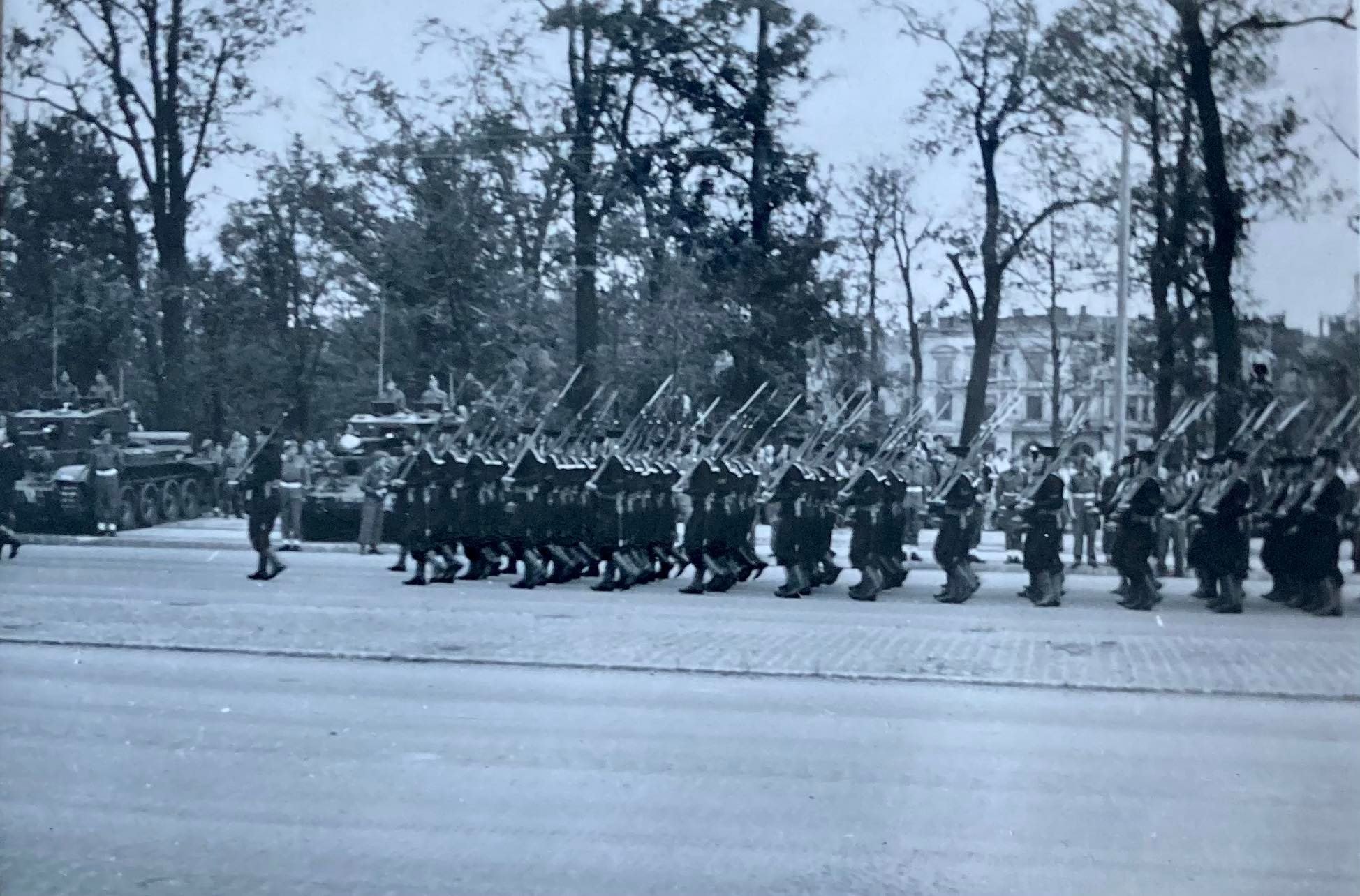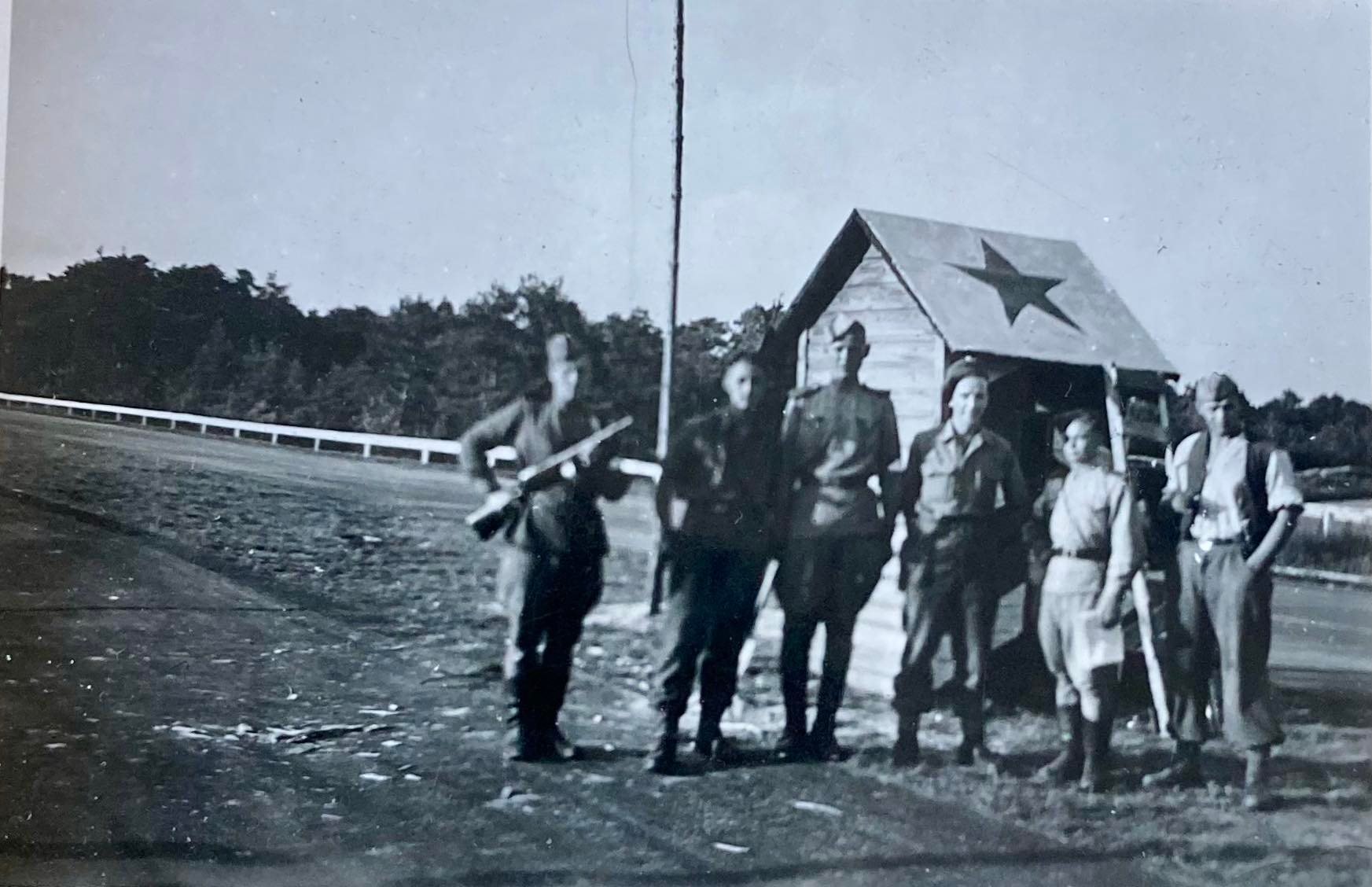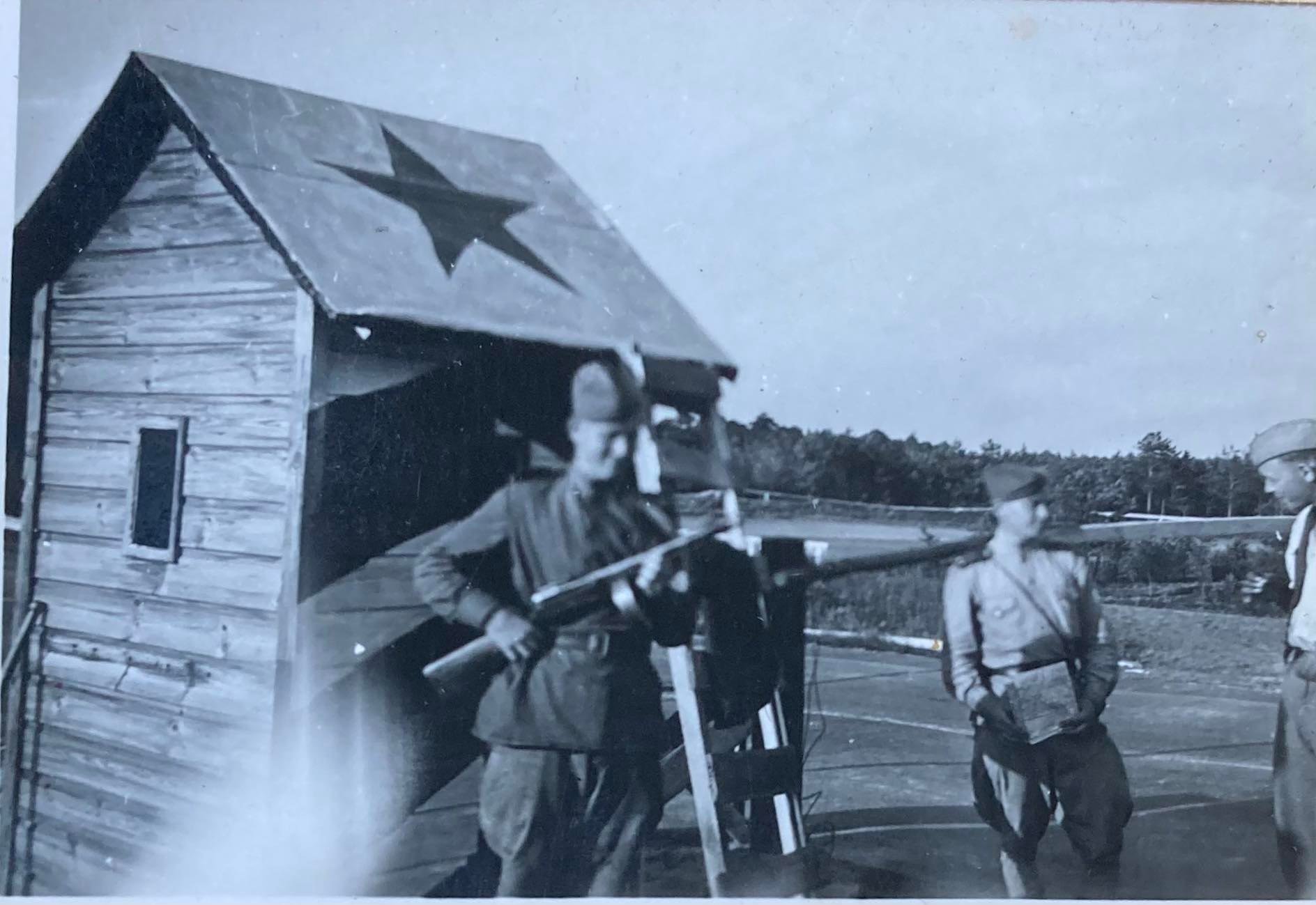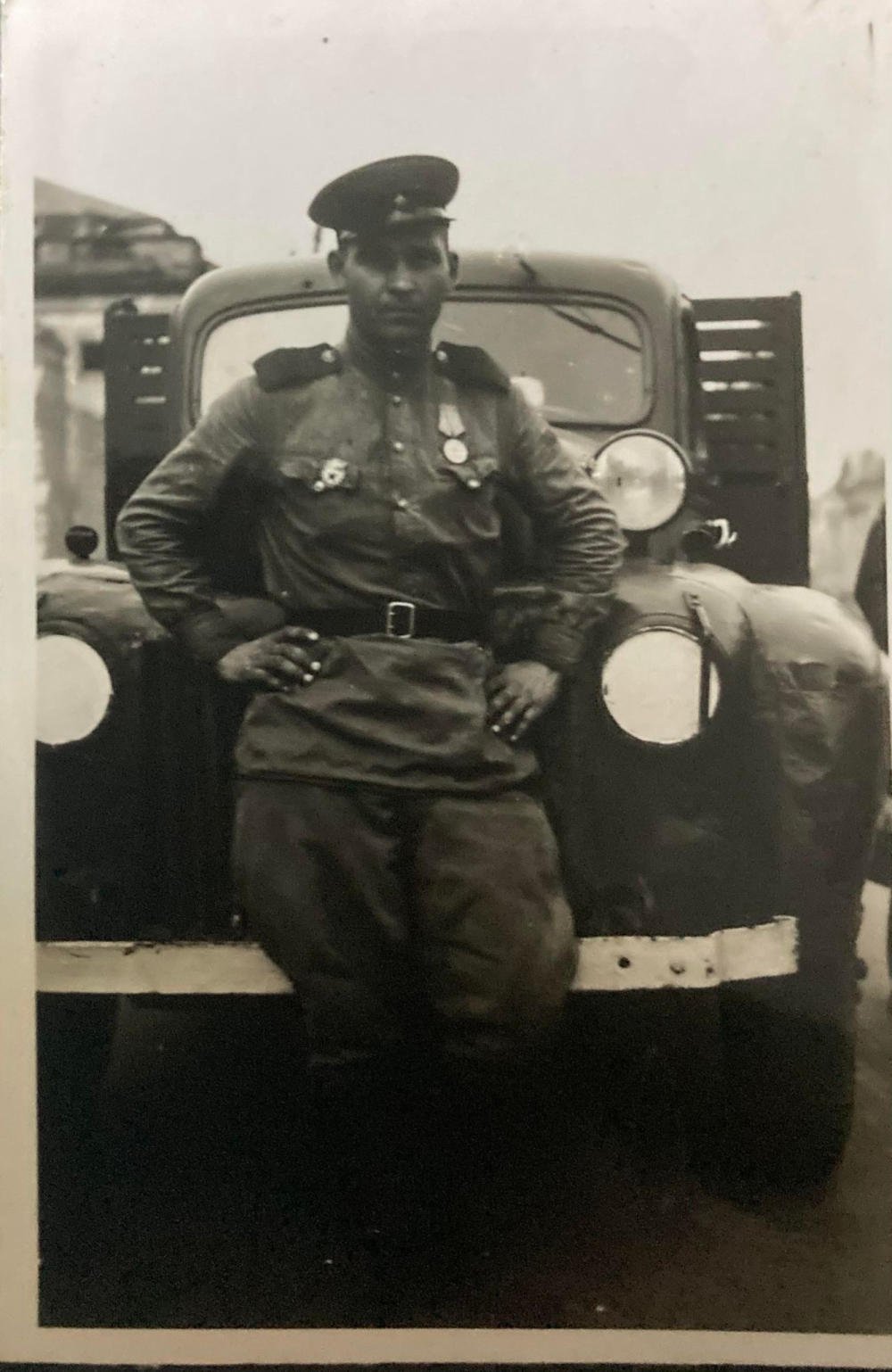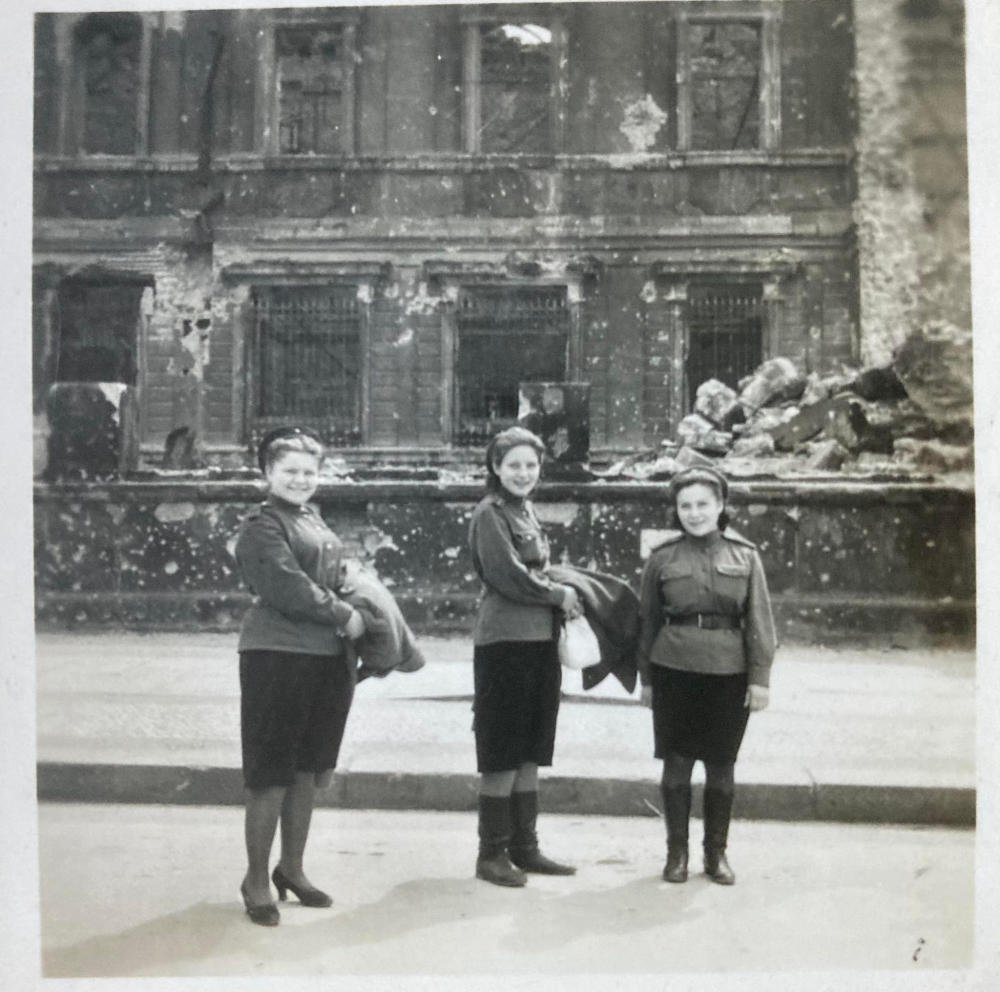
Blog
The Second World War resulted in the deaths of around 85 million people. Additionally, tens of millions more people were displaced. However, amid all the carnage, people demonstrated remarkable courage, fortitude, compassion, mercy and sacrifice. We want to honour and celebrate all of those people. In the War Years Blog, we examine the extraordinary experiences of individual service personnel. We also review military history books, events, and museums. We also look at the history of unique World War II artefacts, medals, and anything else of interest.
Ysselsteyn German War Cemetery: A Complex Memorial Site
In this blog article, discover Ysselsteyn - the Netherlands' only German WWII cemetery holding 32,000+ graves, including Wehrmacht soldiers, SS officers, and war criminals who terrorized occupied Holland.
The Ysselsteyn German War Cemetery in the Netherlands is the largest Second World War German cemetery and the only German military cemetery in the country. Located near Venray (the area saw bitter fighting during Operation Aintree between the end of September and into October 1944) in Limburg province, this 28-hectare (69-acre) cemetery was established in 1946 by the Dutch war graves commission (Nederlandse Gravendienst) following the German occupation of the Netherlands from May 1940 to May 1945.
Who is Buried Here?
The cemetery contains over 32,000 burials from around 25 different nationalities, including:
87 German soldiers from the First World War whose bodies floated down rivers to the Netherlands
Approximately 32,000 Second World War casualties
Wehrmacht and SS soldiers, Dutch collaborators, supporters from other nations, and civilians, including women and children
Over 5,000 unknown burials marked as "Ein Deutscher Soldat" (A German Soldier)
Ysselsteyn: Netherlands' only German WWII cemetery.
The Dark Reality
According to a plaque at the site, recent research reveals that approximately 2,000 to 3,000 of those buried were actively involved in war crimes, including the systematic persecution and murder of 102,000 Jews (mostly Dutch), as well as Sinti and Roma people. About 3,000 of the burials were soldiers detailed to occupation duties, including razzias, deportations, illegal incarceration, and Jew-hunting. Notable among the buried is Julius Dettmann, an SS officer who deported Anne Frank and her family from their hiding place in Amsterdam.
Modern Management and Purpose
In 1976, the Dutch government transferred administration of the cemetery to the German War Graves Commission (Volksbund Deutsche Kriegsgräberfürsorge). Today, the site serves as an international education centre that promotes peace and mutual understanding, complete with a visitor centre and youth meeting centre.
The Konstantin Benzien Story
In December 1943, German fighter pilot Unteroffizier Konstantin Benzien crashed his Messerschmitt Bf 109 into a butcher's shop in Opeinde, Friesland, after aerial combat with American bombers. For 79 years, his identity remained unknown, and his remains were buried in an unnamed grave at Ysselsteyn cemetery. Researchers from the Missing Airmen Memorial Foundation finally solved the mystery using DNA extracted from envelope glue that his sister had licked decades earlier when sending letters. The DNA from the glue matched samples from the pilot's recovered bones, allowing German authorities to officially identify him and give his grave a proper headstone with his name.
Ongoing Controversy
The cemetery remains controversial, with protests from groups like the Dutch Anti-Fascists' League and Jewish organisations opposing commemorative events. The site occasionally receives visits from neo-Nazis, highlighting the ongoing tension between remembrance and the glorification of those who committed atrocities.
This cemetery represents a complex memorial site that serves both as a final resting place and a stark reminder of the atrocities of war, emphasising the importance of learning from history. Sadly, with war raging in Ukraine and across the globe, it seems some lessons remain outside human comprehension.
References:
Youth and Educational Meeting Centre Ysselsteyn
Strategic Insights from the Battle for Crete
Operation Mercury - the Battle for Crete in 1941 - was a ground-breaking airborne invasion. This historic event offers modern organisations valuable lessons in strategy, leadership, and adaptability. By examining the successes and failures of this battle, we can gain insights into effective decision-making and resilience in today’s competitive business world.
In May 1941, the idyllic Mediterranean island of Crete, a strategic location for controlling the region, became the stage for one of the Second World War’s most daring and innovative military operations. Operation Mercury, Nazi Germany's airborne invasion of Crete, marked a turning point in military tactics and offers valuable lessons for modern business leaders. This blog post explores why the German forces succeeded against British and Commonwealth defenders, and what today's organisations can learn from this historic battle.
The German Gambit for Crete: Innovation and Risk
The brainchild of Luftwaffe General Kurt Student, Operation Mercury represented a huge gamble by the German high command. Prior to this operation, no military force had ever tried to capture a whole island mainly through airborne assault. According to one of his closest aides, Student possessed the unusual ability to combine his inclination for the new, unconventional and adventurous with a working method based on meticulous staff work and precise attention to detail. As Mark Bathurst notes in his article for New Zealand Geographic, “Operation Mercury - the invasion of Crete by Nazi Germany - began on 20 May 1941, when gliders and paratroops (Fallschirmjäger) swooped through the dust and smoke thrown up by Luftwaffe bombs and cannon”. The Germans employed innovative tactics such as using silent gliders to land troops behind enemy lines, catching the defenders off guard.
This innovative approach surprised the Allied defenders, despite their superior numbers and defensive positions. The Germans’ willingness to embrace new tactics and technologies paid off, albeit at a high cost in casualties. Between 20 May and 1 June 1941, the Germans suffered 3,352 casualties. However, we must not forget the immense human cost paid by the Cretans during the Nazi occupation, resulting in the deaths of more than 3,400 individuals.
For business leaders, this underscores the potential rewards of innovation and calculated risk-taking. Companies that dare to challenge conventional wisdom and pioneer new approaches, such as adopting disruptive technologies or entering untapped markets, often gain a significant competitive advantage. However, it is crucial to balance innovation with proven methods and have contingency plans in place, as the high casualty rate among German paratroopers demonstrates.
Allied Failures: The Perils of Poor Communication and Complacency
Despite having advance knowledge of the German invasion plans through Ultra intercepts (signals intelligence), the Allies failed to mount an effective defence. This failure stemmed from several factors, including poor communication, complacency, and ineffective leadership.
As one historical account points out, “The Allied forces on Crete were a mix of British, Australian, New Zealand, and Greek troops, with unclear command structures and poor coordination”. This lack of clear leadership and communication channels severely hampered the defenders’ ability to respond effectively to the German assault.
Moreover, Allied commanders, including New Zealand’s General Bernard Freyberg, seemed overly concerned about a potential seaborne invasion, diverting crucial resources away from the defence of key airfields. This misallocation of forces proved disastrous when the Germans seized control of the Maleme airfield, allowing them to fly in reinforcements and ultimately secure victory.
For businesses, this serves as a stark reminder of the importance of clear communication, effective leadership, and the dangers of complacency. Even with superior resources or market intelligence, companies can fail if they do not have systems in place to act on information quickly and decisively. Leaders must ensure that all team members are aligned with strategic priorities and can adapt swiftly to changing circumstances.
The Power of Seizing Opportunities
Despite heavy initial losses, the German forces managed to capture the critical Maleme airfield, west of Chania. This success allowed them to fly in reinforcements and ultimately turn the tide of the battle. As Johann Stadler, a German veteran, recalled, “I was very proud. It was the first time in war history an island was conquered from the air”.
This aspect of the battle highlights the importance of rapidly capitalising on opportunities, even in the face of setbacks. In business, the ability to quickly identify and exploit key opportunities, such as emerging market gaps or shifting customer preferences, can make the difference between success and failure. Leaders must cultivate a culture of agility and empower their teams to seize chances when they arise.
Adapting to Changing Circumstances
The battle for Crete also demonstrates the critical importance of adaptability. The Germans had to adjust their plans on the fly when they encountered stronger-than-expected resistance. Conversely, the Allies’ rigid adherence to their initial defensive plans, despite changing circumstances, contributed to their defeat.
For business leaders, this underscores the need for agility and the ability to rapidly adjust strategies when market realities do not align with expectations. Successful companies are those that can pivot quickly in response to unexpected challenges or opportunities, such as technological disruptions or shifts in consumer behaviour. Building a flexible, responsive organisation is key to navigating today’s fast-paced business landscape.
The Cost of Victory: Long-term Strategic Implications
While Operation Mercury was ultimately successful, it came at a high cost. The heavy casualties suffered by the German paratroopers led Hitler to prohibit future large-scale airborne operations, effectively wasting this specialised resource.
This outcome offers a valuable lesson for businesses about the importance of considering long-term strategic implications when pursuing high-risk, high-reward strategies. Short-term successes that come at too high a cost can ultimately prove detrimental to long-term goals and capabilities. Leaders must carefully weigh the potential benefits of bold moves against their potential downsides and opportunity costs.
Learning from Failure and Setbacks
Although the Allies lost the Battle of Crete, they learned valuable lessons that they applied to later amphibious invasions, such as the landings in Sicily and Normandy. Their ability to adapt and improve their tactics based on the hard-won experience at Crete ultimately contributed to their success in the war. However, it can be argued that the Allies learned some of the wrong lessons from the German victory on Crete. As the war progressed, the Allies amassed considerable airborne forces, but their deployment was infrequent and not always successful. In 1944, Britain was chronically short of infantrymen while thousands of ‘special service’ troops like paratroopers were held in reserve for airborne operations that were frequently postponed or cancelled.
Similarly, businesses must learn to treat failures and setbacks as opportunities for growth and improvement. By conducting thorough post-mortems, identifying root causes, and implementing corrective actions, companies can emerge stronger and more resilient. Leaders who encourage a culture of continuous learning and improvement will have better preparation to face the inevitable challenges of the business world.
Applying Historical Lessons to Modern Business
The Battle for Crete offers a wealth of insights for today's business leaders:
Innovation and calculated risk-taking can provide a competitive edge but must be balanced with proven methods and contingency planning.
Clear communication, effective leadership, and avoiding complacency are crucial, even when you seem to have an advantage.
The ability to quickly seize opportunities and adapt to changing circumstances can be the difference between success and failure.
It is essential to consider the long-term strategic implications of high-risk actions, not just short-term gains.
Failures and setbacks should be treated as valuable learning opportunities for continuous improvement.
By studying historical events like Operation Mercury, business leaders can gain valuable insights on strategy, tactics, leadership, and communication. These lessons, drawn from one of military history’s most daring operations, remain remarkably relevant in today’s fast-paced, competitive business environment. As modern leaders navigate the challenges and opportunities of the 21st century, they would do well to remember the hard-fought lessons of Crete and apply them to their own strategic decisions.
References:
Bathurst, M. (2005). Operation Mercury: The Battle of Crete. New Zealand Geographic, Issue 073. https://www.nzgeo.com/stories/crete/
Bell, K. (2006). Battle of Crete: It Began with Germany’s Airborne Invasion—Operation Mercury. Historynet. https://www.historynet.com/battle-of-crete-it-began-with-germanys-airborne-invasion-operation-mercury/
MacDonald, C. (1995). The Lost Battle – Crete 1941.
Rehman, I. (2024). Britain’s Strange Defeat: The 1941 Fall of Crete and Its Lessons for Taiwan. War on the Rocks: https://warontherocks.com/2024/05/britains-strange-defeat-the-1941-fall-of-crete-and-its-lessons-for-taiwan/
The defence and loss of Crete, 1940-1941 (Part 1). (2020). The National Archives. https://blog.nationalarchives.gov.uk/the-defence-and-loss-of-crete-1940-1941-part-1/
The defence and loss of Crete, 1940-1941 (Part 2). (2020). The National Archives. https://blog.nationalarchives.gov.uk/the-defence-and-loss-of-crete-1940-1941-part-2/
The Silent Disaster: How Communication Failures Helped Doom Operation Market Garden
As we commemorate Operation Market Garden this September, it's worth reflecting on one of the most ambitious - and ultimately ill-fated - military operations of World War II. Launched in September 1944, Operation Market Garden aimed to secure a series of nine bridges in the Netherlands, potentially paving the way for a swift advance into Germany. It was a massive undertaking, involving over 34,000 airborne troops and 50,000 ground forces. Yet, what began with high hopes ended in a costly failure, partly because of a communications breakdown.
Operation Market Garden: 17 to 25 September 1944
As we commemorate Operation Market Garden this September, it's worth reflecting on one of the most ambitious - and ultimately ill-fated - military operations of World War II. Launched in September 1944, Operation Market Garden aimed to secure a series of nine bridges in the Netherlands, potentially paving the way for a swift advance into Germany. It was a massive undertaking, involving over 34,000 airborne troops and 50,000 ground forces. Yet, what began with high hopes ended in a costly failure, partly because of a communications breakdown.
At the heart of Market Garden's communication crisis was the inadequacy of the radio equipment. The British Army's standard radio set, the Wireless Set No. 22, proved insufficient for the task at hand. These radios had a maximum range of around six miles under ideal conditions, yet the Corps Headquarters was positioned a distant 15 miles away. To compound matters, the terrain around Arnhem presented additional challenges that the planners had failed to fully account for. The Arnhem area was characterised by woodland and urban buildings. These physical obstacles severely interfered with radio transmissions, further diminishing the already limited range of the No.22 sets. As a result, what should have been a vital lifeline for the paratroopers of the 1st Airborne Division fighting desperately to hold the north side of the bridge at Arnhem became a silent witness to their isolation and eventual defeat.
Interestingly, a potential solution to these communication problems was literally at hand. The Netherlands boasted an extensive and sophisticated telephone network, largely intact despite years of German occupation. This network was remarkably resilient, comprising three interconnected systems: the national Ryks Telefoon system, the Gelderland Provincial Electricity Board's private network, and a clandestine network operated by Resistance technicians. Even when key exchanges were disrupted, the Dutch were still able to communicate using alternative routings.
Yet, astonishingly, Allied planners failed to fully leverage this resource. This oversight raises profound questions about the rigidity of military thinking. Why did the Allied command, known for its adaptability in other areas, fail to pivot to this seemingly obvious solution? The answer likely lies in a combination of factors: overconfidence in existing systems, security concerns, lack of familiarity with local infrastructure, the fast-paced nature of the operation, and a wariness of the Dutch Resistance.
British XXX Corps cross the road bridge at Nijmegen
The consequences of this failure were dire. While some units made limited use of the phone system, the 1st Airborne Division at Arnhem - where the need was most critical - did not. They made no attempt to convey their urgent need for supplies or relief via the phone system to the corps headquarters. Ironically, Dutch agents inside the 82nd Airborne's landing area used the phone system early on D+1 to inform the 82nd that “the Germans are winning over the British at Arnhem” - the first indication that the 1st Airborne was in serious trouble.
In the face of radio failures, the Allied forces resorted to various other communication methods, each with its own limitations. Carrier pigeons proved unreliable, with many birds failing to deliver messages. Traditional forms of communication like land lines, runners, and dispatch riders were vulnerable to enemy fire and the chaos of battle. The artillery net ended up being one of the more reliable communication methods, allowing for effective artillery support and occasional relay of messages to higher command.
The communication failures during Operation Market Garden offer valuable insights into military organisational thinking. They underscore the importance of flexibility, the need to understand and potentially leverage local infrastructure, the crucial role of contingency planning, and the necessity of fostering a culture that encourages quick problem-solving and innovative thinking at all levels of command.
It's worth noting the contrast between the German military's mission-type tactics (Auftragstaktik), which emphasized flexibility and initiative, and the British Army's reliance on detailed orders and strict adherence to commands. This difference in command styles meant that German forces could often exploit opportunities more rapidly, while British forces maintained tighter control but at the cost of agility.
As we reflect on the events of eighty years ago, it's clear that the lessons learned extend far beyond the realm of military strategy. In any high-stakes endeavour, the ability to communicate effectively - and to adapt when primary methods fail - can mean the difference between success and catastrophic failure. The underutilisation of the Dutch phone system stands as a poignant example of how overlooking available resources can have far-reaching consequences.
The story of Operation Market Garden serves as a stark reminder of the critical role that effective communication plays not just in military operations, but in any complex undertaking. It's a lesson that remains relevant today, in fields ranging from business to disaster response. As we face our own challenges in an increasingly connected world, let's not forget the silent disaster that unfolded in Holland eighty years ago - and the valuable lessons it still has to teach us.
References
1. Middlebrook, M. (1994). Arnhem 1944: The Airborne Battle. Westview Press.
2. Ryan, C. (1974). A Bridge Too Far. Simon & Schuster.
3. Kershaw, R. (1990). It Never Snows in September: The German View of Market-Garden and the Battle of Arnhem, September 1944. Ian Allan Publishing.
4. Buckley, J. (2013). Monty's Men: The British Army and the Liberation of Europe. Yale University Press.
5. Beevor, A. (2018). The Battle of Arnhem: The Deadliest Airborne Operation of World War II. Viking.
6. Powell, G. (1992). The Devil's Birthday: The Bridges to Arnhem 1944. Leo Cooper.
7. Badsey, S. (1993). Arnhem 1944: Operation Market Garden. Osprey Publishing.
8. Hastings, M. (2004). Armageddon: The Battle for Germany, 1944-1945. Alfred A. Knopf.
9. Zaloga, S. J. (2014). Operation Market-Garden 1944 (1): The American Airborne Missions. Osprey Publishing.
10. Clark, L. (2008). Arnhem: Operation Market Garden, September 1944. Sutton Publishing.
11. MacDonald, C. B. (1963). The Siegfried Line Campaign. Center of Military History, United States Army.
12. Bennett, D. (2007). Airborne Communications in Market Garden, September 1944. Canadian Military History, 16(1), 41-42.
13. Greenacre, J. W. (2004). Assessing the Reasons for Failure: 1st British Airborne Division Signal Communications during Operation 'Market Garden'. Defence Studies, 4(3), 283-308. https://www.tandfonline.com/doi/full/10.1080/1470243042000344777#d1e290
Book Review: SAS - Duty Before Glory: The True WWII Story of SAS Original Reg Seekings
Book Review: SAS - Duty Before Glory: The True WWII Story of SAS Original Reg Seekings.
There are an estimated 300 to 500 books that delve into every aspect of Britain's elite Special Air Service (SAS). With the origins of the SAS having been so extensively explored in books, documentaries, and TV dramas, one might think there is little new to say. Nevertheless, Tony Rushmer’s ‘SAS - Duty Before Glory’ brings to light the remarkable tale of Reg Seekings, one of the SAS's original members and most decorated non-commissioned officers of World War II. Set for release on 26 September 2024 by Michael O'Mara Books, this biography is a gripping account of bravery, camaraderie, and the extraordinary feats of an ordinary man.
Summary
Rushmer's narrative traces Seekings' journey from his humble beginnings in the Cambridgeshire Fens to his pivotal role in the SAS during World War II. The author draws upon archive recordings and previously unseen family documents to paint a vivid picture of Seekings' life, from farm labourer's son and amateur boxer to highly decorated squadron sergeant major.
The book delves into Seekings' involvement in daring behind-the-lines operations across North Africa, Sicily, and Italy. It recounts hair-raising, and sometimes quite shocking experiences, including surviving a bullet to the base of his skull in France and being one of the first Allied soldiers to enter Belsen concentration camp.
SAS: Seekings and Seekings
Rushmer's meticulous research shines through in the level of detail provided. The use of Seekings' own handwritten accounts of operations adds a layer of authenticity and immediacy to the narrative. The author's journalistic background is evident in his ability to weave together personal anecdotes with a broader historical context, creating a compelling read.
The book doesn't shy away from presenting Seekings as a complex, frequently violent character. Seekings appeared to be one of those rare people who was able to remain calm and clearheaded, no matter how urgent or stressful the situation was. He was also gifted with incredible luck, repeatedly emerging from combat without a scratch while many of his comrades were killed and wounded.
One of the book's compelling aspects is its exploration of the relationship between Reg and his brother Bob, who followed him into the SAS. While the brothers shared a sporty and competitive nature, it’s evident that Reg possessed an extraordinary inner strength. This mental resilience allowed him to perform his duties consistently, no matter how unpleasant.
In contrast, the narrative paints a poignant picture of Bob's struggle with the intense mental and physical demands of SAS operations. This juxtaposition of the brothers' experiences adds a layer of human interest to the story, highlighting the exceptional nature of Reg's capabilities while also underscoring the immense pressures faced by the original members of the SAS.
Target Reader
‘SAS - Duty Before Glory’ will appeal to military history enthusiasts, particularly those interested in Special Forces operations during World War II. The book's focus on personal experiences and character development also makes it accessible to anyone who enjoys reading about the lives of remarkable characters.
In summary
Tony Rushmer's ‘SAS - Duty Before Glory’ is a welcome addition to the canon of World War II literature. By focusing on the extraordinary life of Reg Seekings, Rushmer provides a fresh perspective on the early days of the SAS and the individuals who shaped its legacy. The book serves not only as a tribute to Seekings but also as a testament to the indomitable human spirit in the face of adversity.
This meticulously researched and engagingly written biography is sure to be a must-read for anyone interested in the early history of the SAS and its original members.
The Fleet Air Arm’s Solution to the Corsair’s Problem
The Vought F4U Corsair's journey from a flawed carrier-based fighter to a WWII ace offers powerful lessons for businesses facing seemingly insurmountable challenges. Through innovative thinking, adaptability, and focusing on process changes rather than expensive redesigns, the Corsair's transformation demonstrates how companies can turn potential failures into remarkable successes.
The story of the Vought F4U Corsair’s development and eventual success provides valuable insights for businesses facing seemingly insurmountable challenges. Initially designed as a carrier-based fighter, the Corsair’s long nose and consequent poor forward visibility made it notoriously difficult to land on aircraft carriers, leading to several accidents.
Why did Britain use the American F4U Corsairs? The complete story
This situation mirrors a common business scenario: a product designed for a specific purpose that fails to meet critical requirements in real-world application. Many companies might have scrapped the project or invested heavily in redesigning the aircraft or modifying carriers - both expensive and time-consuming solutions.
However, the British Fleet Air Arm developed an innovative approach that transformed the Corsair’s fortunes without significant modifications to either the plane or the carriers. They introduced a new landing technique, a wide curving approach, which compensated for the limited visibility. The British also made several small technical modifications to the aircraft, such as raising the pilots' seat and a new canopy that provided better visibility.
These creative solutions offer several key lessons for businesses:
1. Innovation doesn’t always require starting from scratch. Sometimes, the most effective solutions involve changing processes or approaches rather than the product itself.
2. Cross-functional collaboration can lead to breakthrough solutions. The British solution came from operational experience rather than engineering, highlighting the value of diverse perspectives in problem-solving.
3. Customer feedback and real-world testing are crucial. The Corsair’s issues only became apparent in actual carrier operations, underscoring the importance of thorough, real-world product testing.
4. Adaptability is key to success. Rather than abandoning the Corsair as a carrier-borne aircraft, the British found ways to adapt its used to overcome its limitations.
5. Sometimes, the most cost-effective solutions are the simplest. The British approach avoided expensive redesigns or modifications, offering a cost-effective solution to a complex problem.
6. Training and skill development can overcome product limitations. By focusing on pilot training and developing new techniques, the British turned a liability into an asset.
The Corsair’s journey from problematic design to successful deployment demonstrates that, with innovative thinking, collaboration, and a willingness to adapt, businesses can overcome significant challenges and turn potential failures into successes. It's a powerful reminder that the solution to a problem may not always lie in changing the product, but in changing how we use it.
Businesses can gain valuable insights from military history that can enhance their strategic planning and operational efficiency. Lessons learned from past conflicts highlight the importance of adaptability, leadership, and the effective allocation of resources. By understanding how military strategies and tactics can be applied to the corporate world, organisations can improve decision-making, strengthen team cohesion, and navigate challenges more effectively. If your business is interested in exploring these lessons further, please reach out for a consultation.
Contact me to learn more about how military history can inform your business strategy.
The British Army’s Occupation of Northwest Germany after May 1945
In this article, we will focus on the British occupation of Germany after May 1945, the British Army's occupation of West Berlin, the Victory Parade of July 1945, and relations with the Soviets.
After the defeat of Nazi Germany in May 1945, the victorious Allied powers divided the country into four occupation zones, each controlled by one of the four occupying powers - the United States, Great Britain, France, and the Soviet Union. This division of Germany would mark the beginning of a new era for the country, as it faced a long and difficult process of reconstruction and democratization. In this article, we will focus on the British occupation of Germany after May 1945, the British Army's occupation of West Berlin, the Victory Parade of July 1945, and relations with the Soviets.
The British Occupation of Germany after May 1945
On 25 August 1945, Field Marshal Montgomery's 21st Army Group was renamed the British Army of the Rhine (BAOR). It was responsible for the occupation and administration of the British Zone in northwest Germany, including the cities of Hamburg and Bremen, assisted by the Control Commission Germany (CCG). The CCG took over aspects of local government, policing, housing and transport.
Their primary objective was to demilitarize and disarm the defeated German forces, as well as to dismantle the Nazi regime and bring war criminals to justice. The British forces, under the command of Field Marshal Bernard Montgomery, faced a daunting task, as Germany was in a state of complete chaos and disarray.
One of the first challenges the British faced was dealing with the large numbers of displaced persons, refugees, and prisoners of war. The British Army, along with other Allied powers, established numerous displaced persons camps and worked to repatriate prisoners of war and refugees to their home countries. The British also faced the challenge of providing food and shelter to the German population, which was suffering from severe shortages of basic necessities such as food, fuel, and medicine. The BAOR mobilised former enemy soldiers into the German Civil Labour Organisation (GCLO), providing paid work and accommodation for over 50,000 Germans by late 1947.
The BAOR was also responsible for pursuing suspected war criminals in its zone of occupation. It established the British Army War Crimes Investigation Teams (WCIT) and was assisted by other units, including the Special Air Service (SAS). The most famous Nazi caught by the British was Heinrich Himmler, chief of the SS and one of the main architects of the Holocaust. He was arrested at a checkpoint and taken to an interrogation camp near Lüneburg. However, Himmler was able to escape prosecution for his crimes by committing suicide with a concealed cyanide pill. Political support for war crimes prosecutions soon declined as relations with the Soviet Union deteriorated. It soon became a political necessity for the Western powers to make friends with the Germans rather than prosecute them.
The British Sector of Berlin 1945
The British Army's occupation of the British sector of Berlin in 1945 was a key moment in the post-war history of Germany. Berlin, which was located deep within the Soviet-occupied zone of Germany, was divided into four sectors, with the Soviet Union, the United States, Great Britain, and France each controlling a sector. The British sector was in the western part of the city.
The British Army faced numerous challenges in the occupation of Berlin. The city had been heavily bombed during the war, and many buildings were in ruins. The British Army worked to rebuild the city's infrastructure and provide basic services such as water, electricity, and sanitation.
Another major challenge faced by the British Army was dealing with the Soviet Red Army, which was stationed in and around Berlin. The relationship between the British and the Soviets was strained, with tensions running high over issues such as the repatriation of Soviet prisoners of war and the control of Berlin. The British Army, along with the other Allied powers, worked to maintain a delicate balance of power in the city, while also providing security and maintaining order.
The Victory Parade of July 1945
On 21 July 1945, the British held a victory parade through the ruins of Berlin to commemorate and celebrate the end of the Second World War. Around 10,000 troops of the British 7th Armoured Division, the famous 'Desert Rats', were paraded under review by British Prime Minister Winston Churchill and Field Marshal Bernard Montgomery. On 7 September 1945, there was another parade featuring all the victorious Allies, but neither Montgomery nor U.S. General Dwight D Eisenhower attended. This gesture signified a deterioration in the relationship between the Allies, as differences in ideology between the West and the Soviet Union were becoming harder to ignore and the slide towards a Cold War had begun.
British Pathe News footage of the Berlin Victory Parade, 21 July 1945.
An Iron Curtain
Relations between the Western powers and the Soviet Union deteriorated immediately following the end of the war in Europe. The main sources of tension were the Soviet Union's unwillingness to allow democratic governments to emerge in Eastern Europe, and its desire to maintain a sphere of influence in the region. The Western powers, led by the United States, saw this as a threat to their own security and interests.
The Soviet Union's aggressive actions in the post-war period, including the establishment of communist governments in Poland, Hungary, and Czechoslovakia, fuelled Western fears of Soviet expansionism. The United States responded by implementing the Truman Doctrine, which committed the U.S. to support countries threatened by communism, and by providing economic and military aid to Western Europe through the Marshall Plan.
Tensions between the West and the Soviet Union reached a boiling point in 1947 when the Soviet Union refused to participate in the Marshall Plan and instead formed its own economic bloc, the Council for Mutual Economic Assistance (COMECON). In 1948, the Soviet Union blockaded Berlin, prompting the Western powers to launch the Berlin Airlift to supply the city.
On March 5, 1946, former British Prime Minister Winston Churchill delivered his famous "Iron Curtain" speech at Westminster College in Fulton, Missouri. In this speech, Churchill warned of the growing Soviet threat in Europe and called for a closer alliance between the United States and Great Britain to contain Soviet aggression. The speech marked a turning point in the post-war era and is considered a seminal moment in the Cold War.
In 1949, the three western occupation zones were merged to form the Federal Republic of Germany (West Germany). The Soviets followed suit in October 1949 with the establishment of the German Democratic Republic (East Germany). In 1955, West Germany joined NATO and was encouraged to build a new military, the Bundeswehr. In response, the Communist states of Eastern Europe formed the Warsaw Pact.
Sources:
Photography/Images:
All photographs used to illustrate this article were taken by my relative George Trumpess who was stationed in Minden, Germany, and travelled regularly to Berlin during the summer of 1945.
